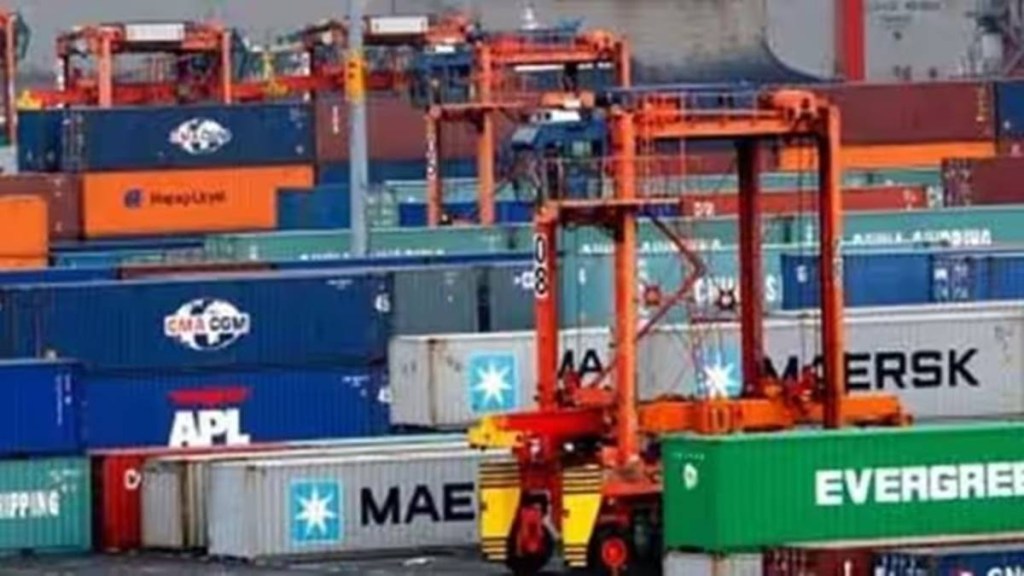With the crisis in the Red Sea escalating with each passing day, 2024 will see a substantial impact on trade volumes as supply chains will remain disrupted and rising costs of shipping will make exports of low margin products unviable, according to a report.
The crisis which began on October 19 last year when Houthi rebels of Yemen started attacking civilian shipping is now in its fifth month. With ships now avoiding the Suez Canal route and detouring around the Cape of Good Hope, transit times have increased by 30% and container shipping capacity has dropped by 9%.
“The necessary rerouting is causing congestion in key ports like Cape Town, Ngqura, Richards Bay, and Durban in South Africa, leading to delays in loading and unloading cargo, which could exacerbate supply chain challenges and potentially lead to shortages.” report prepared by Global Trade Research Initiative founder Ajay Srivastava.
Countries in Asia, Africa, and Europe will face the most disruption across industries.
For India the conflict is leading to an increase in shipping costs by 40-60%, insurance costs by 15-20% and delays due to rerouting of up to 20 days.
The disruption is significantly impacting Indian trade, especially with the Middle East, Africa, and Europe. I
Approximately 65% of India’s crude oil imports in FY2023, valued at $105 billion, from countries like Iraq, Saudi Arabia, and others, likely passed through the Suez Canal. For overall merchandise trade with Europe and North Africa, about 50% of imports and 60% of exports, totaling $113 billion, might have used this route.
Oil imports from Russia through the Suez Canal are troubled by longer routes, raising costs and delaying supplies. As a big exporter of petroleum products to Europe, India faces delays and higher shipping costs, making some exports too expensive to continue.
“Confectionery companies are hit by high cocoa prices and shortages due late deliveries from Africa, reducing profits. Textile and leather industries which operate on thin margins are re-negotiating with buyers. Car makers are using different routes to avoid delays and shopping costs for all container goods, including cars and electronics, are up,” the GTRI report said.
The Indian companies are negotiating costs with logistics providers, insurance companies, and considering alternative ports to ensure the timely delivery of goods.
Firms are adopting strategies like multiple sourcing for less complex components to maintain supply continuity and cost efficiency. For more complex and critical products, companies are exploring strategic sourcing options including onshoring, nearshoring, and friendshoring to reduce geopolitical risks and ensure supply chain resilience
Srivastava said to help Indian companies the government can think of financial support and insurance schemes to mitigate the impact of the disruptions.
“While India is implementing measures to ensure the safety of its ships in the Red Sea, the effectiveness may be limited as most Indian cargo is carried by global shipping firms,” he added.
Relying on ports outside conflict zones, like Oman and Djibouti, for transshipment and regional trade could be another option before the government, the report added.
‘”The crisis also underscores the importance of exploring alternative maritime and land-based trade routes. This includes potential investment in the Northern Sea Route and expanded land transport infrastructure.
India-Middle East-Europe Economic Corridor (IMEC) becomes important in this context,” Srivastava said.
The IMEC project aims to create an expansive economic corridor connecting Europe, the Middle East, and Asia through improved transportation, communication networks, and energy infrastructure.
It comprises rail, road, and sea routes across two main corridors: The East Corridor links India to the Arabian Gulf. The Northern Corridor connects the Gulf to Europe.

